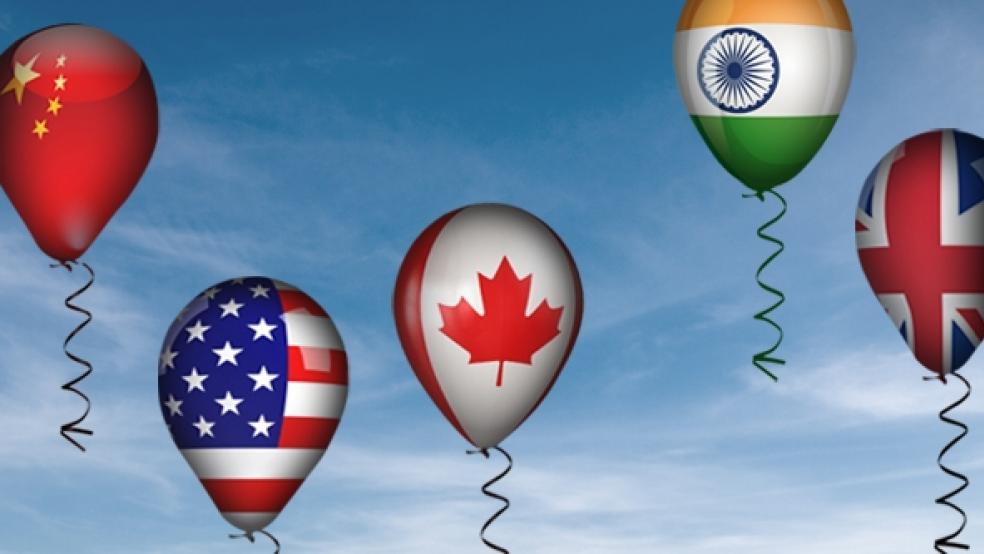Little wonder many people think inflation is getting worse. The cost of some of two of the things they buy most frequently with highly visible prices, food and gasoline is going up sharply.
Last month gasoline prices at the pump shot up 3.5 percent on the heels of an increase almost twice that large in December. Prices of grocery store food rose 0.7 percent, with all six major food groups contributing to what the Bureau of Labor Statistics said was the biggest one-month change since 2008.
Oil, wheat, sugar, copper, cotton and some other commodities are also rising on world markets and generating new concerns about inflation. Food prices are a particular concern after some crop failures have reduced supplies.
But even though food and gasoline are bought frequently in the U.S. and their prices noted all the time, together they account for less than 13 percent of household outlays. The costs of most other items covered by the consumer price index are rising far less rapidly and a few are even falling.
Excluding food and energy items, the so-called core CPI rose only 0.2 percent last month and 1 percent in the last 12 months.
Despite rising commodity prices, many economists--including those in the Obama administration, the Federal Reserve and at private forecasting firms--expect overall inflation to remain subdued this year and probably in 2012 as well.
“Core inflation fell sharply from 2 1/2 percent in mid-2008 to ¾ percent in late 2010,” economists at Goldman Sachs told their clients Friday. “But the slowdown has probably ended.”
The Goldman economists expect the jump in commodity prices to push overall CPI inflation to about a 2 ½ percent rate by the end of this year before it slows again in 2012. In the 12 months ended in January, the CPI rose 1.6 percent.
In contrast, the said core inflation should continue to run at about a 1 percent rate for the next two years, with a continued high jobless rate and “ample spare capacity in the U.S. economy” keeping inflation low.
Federal Reserve officials focus on changes in prices of the goods and services included in personal consumption expenditures, a broader measure inflation than the CPI. A compilation of their forecasts last month showed most expect the PCE price index to increase about 1½ percent or a bit more this year and between 1 percent and 2 percent in 2012.
While the Fed has no formal target for any measure of inflation, most of its officials have indicated they would like to see inflation rates about ½ point higher than what they now anticipate.
Both the officials and the Fed Board’s staff “project that increases in core PCE prices would remain subdued in 2011 and 2012,” according to minutes of a January 25-26 meeting of the central bank’s policy making Federal Open Market Committee. “As in previous projections, the persistent wide margin of economic slack in the forecast was expected to maintain downward pressure on inflation.”
Fractured Fractions
Not all economists are so sanguine about the price outlook. Key Mayland at ClearView Economics is worried. His analysis of the latest CPI data shows an upward curve: “In the U.S., the annualized CPI inflation rate for the 3-month period ending last July = 0%, ending October = 2.5%, and now ending January = 3.9%. See a trend?
“By the way, this pick-up of inflation pressures has occurred with no commensurate pick-up of wage pressures. The notion that a country cannot have inflation without labor cost pressures fully participating is a false notion,” Mayland said.
But the Fed’s forecasts and language suggest the central bank won’t seek to raise interest rates for some time to come. The Goldman economists said steps to remove any of the monetary accommodation the Fed has provided to spur economic growth isn’t likely until next year at least. And they added in Friday’s memo, “If Congress passes a meaningful fiscal consolidation package, this would also argue for very low rates for longer than many now expect.”
The Republican controlled House of Representatives on Saturday morning approved large cuts in spending for the remainder of this fiscal year, though Democrats are strongly opposed to such cuts and President Obama has promised to veto such legislation.
Global Prices Rising
But while inflation may remain low in this country, it’s a serious problem in some other nations whose economies are growing much more rapidly than in the U.S. and for whose people big food price increases are a much greater threat. China is a major example.
For months, government leaders in some countries have complained that the Fed’s policies of holding overnight interest rates close to zero while also buying hundreds of billions worth of longer-term U.S. Treasury securities to hold down long-term rates are responsible for some of their woes. Low rates in the U.S. have caused international investors to flood their economies with money, boosting their already rapid economic growth and generating more inflation.
In a speech in Paris on Friday, Fed Chairman Ben S. Bernanke rebutted those claims, as he has in the past. In some instances, the countries in question have added to their own problems by keeping their currencies undervalued to maintain large export surpluses, Bernanke said.





